How to Order Chinese Food in a Chinese Restaurant

If you’ve ever wondered how to order Chinese food like a pro, you’ve come to the right place. Whether you’re dining in a Chinese restaurant, ordering Chinese food online, or simply want to expand your culinary horizons, we’ve got you covered.
In this comprehensive guide, we’ll delve into the world of Chinese cuisine, providing you with the confidence and know-how to navigate even the most intricate Chinese menu.
From placing a Chinese food order with ease to deciphering regional specialties, we’ll ensure you’re well-equipped for a fantastic dining experience, be it online or in person.
But that’s not all. Our journey doesn’t stop at helping you order food in Chinese. We’ll also explore the art of pronunciation, so you can impress your dining companions (and perhaps even the restaurant staff) with your linguistic skills. With our guidance, you’ll transform from an enthusiastic food lover into a seasoned ordering Chinese food aficionado.
So, sit back, relax, and let us whisk you away on a flavorful adventure, exploring Chinese restaurants and menus near and far. By the time we’re done, you’ll be eager to put your newfound knowledge to the test and savor the delicious rewards. Happy eating, or as they say in Chinese, 慢慢吃 (màn màn chī).
Related Reading: Numbers in Chinese: How to Count and More.
Understanding Chinese cuisine
As we embark on our quest to master the art of ordering Chinese food, it’s essential to first understand the diverse and rich world of Chinese cuisine itself. With a culinary history that spans thousands of years and encompasses a vast country with varying regional flavors, there’s so much more to discover than meets the eye — or the taste buds.
China is home to eight primary regional cuisines, each with its distinct characteristics and flavor profiles. Let’s explore these regional variations to better appreciate the depth and complexity of Chinese food:
- Sichuan (四川 — Sìchuān): Known for its bold and spicy flavors, Sichuan cuisine doesn’t shy away from making a statement. With generous use of garlic, chili peppers, and the mouth-numbing Sichuan peppercorn, this region’s dishes pack a punch that’ll leave your taste buds tingling.
- Guangdong(广东 — Guǎngdōng): Hailing from the southern Guangdong province, Cantonese cuisine emphasizes fresh ingredients and subtle, balanced flavors. Steaming and stir-frying are common cooking techniques, and you’ll often find dishes adorned with a delicate touch of sauces and seasonings.
- Shandong (山东 — Shāndōng): Located in northeastern China, Shandong cuisine features a variety of seafood dishes due to its coastal location. You’ll encounter dishes with light, savory flavors, often accentuated by the use of soy sauce, garlic, and green onions.
- Jiangsu (江苏 — Jiāngsū): Known for its refined presentation, Jiangsu cuisine boasts dishes with delicate flavors, often with a touch of sweetness. The use of precise cooking techniques results in tender, succulent dishes that are as pleasing to the eye as they are to the palate.
- Hunan (湖南 — Hú’nán): Fans of spice can rejoice. Hunan cuisine delivers heat with its liberal use of chili peppers, garlic, and shallots. But don’t worry, the region’s dishes also incorporate a balance of sour, sweet, and savory flavors to create a harmonious taste experience.
- Fujian (福建 — Fújiàn): With a focus on fresh seafood and a variety of mountain-grown ingredients, Fujian cuisine features complex, aromatic flavors. Expect a combination of sweet, sour, and umami tastes, often enhanced by the use of soups and broths.
- Zhejiang (浙江 — Zhèjiāng): With a reputation for its elegant presentation, Zhejiang cuisine showcases fresh, tender ingredients, often with a hint of sweetness. This coastal region’s dishes are typically light and clean, allowing the natural flavors of the ingredients to shine through.
- Anhui (安徽 — Ānhuī): Drawing from the mountainous terrain of the Anhui province, this cuisine highlights wild herbs and game meats. With a focus on simple, rustic flavors, Anhui dishes utilize braising and stewing techniques to preserve the ingredients’ natural essence.
Now that we’ve taken a whirlwind tour of China’s diverse culinary landscape, we’re one step closer to confidently navigating a Chinese menu and placing that perfect Chinese food order. But our journey doesn’t end here. Next up, we’ll explore the art of ordering itself, complete with pronunciation tips and strategies for a seamless dining experience.
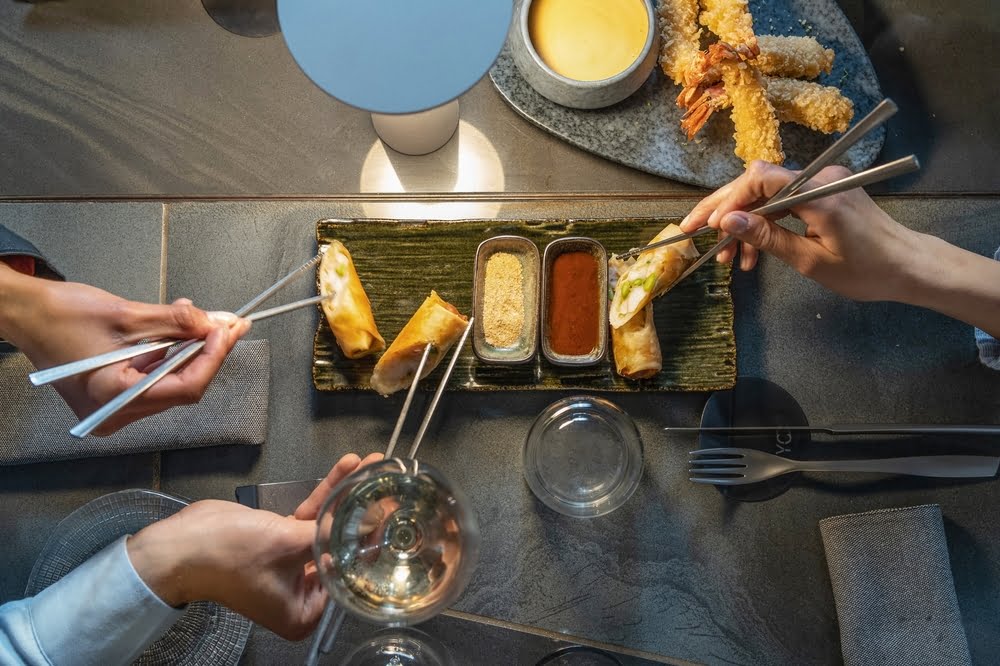
The art of ordering Chinese food
As we venture further into our guide, it’s time to turn our attention to the art of ordering. From deciphering a Chinese menu to mastering key phrases, we’re here to ensure you’re fully prepared to order Chinese food with confidence and flair, whether it’s in a bustling Chinese restaurant or from the comfort of your home via online ordering.
Types of Chinese restaurants
First, let’s explore the various types of Chinese restaurants that you might encounter on your culinary journey. From regional specialty eateries to dim sum hotspots, there’s a wide range of establishments catering to different preferences and experiences. Get ready to discover the exciting variety of Chinese restaurants and how each one can offer a unique taste of this vast and diverse cuisine.
- Family-style: These cozy, casual establishments are perfect for sharing dishes with family and friends. It’s a fantastic opportunity to try a variety of flavors while enjoying a warm, communal atmosphere.
- Dim sum (点心 — Diǎnxīn): Known for its small plates and bite-sized delicacies, dim sum is a delightful experience often enjoyed during brunch or lunchtime hours. With carts of steamed, fried, and baked goodies rolling by, you’ll be spoiled for choice.
- Fast food: For those who are short on time but still crave authentic Chinese flavors, fast food restaurants serve up quick and satisfying meals that hit the spot.
- Fine dining: If you’re in the mood to indulge, up-market Chinese restaurants offer meticulously crafted dishes with an emphasis on presentation and refined flavors.
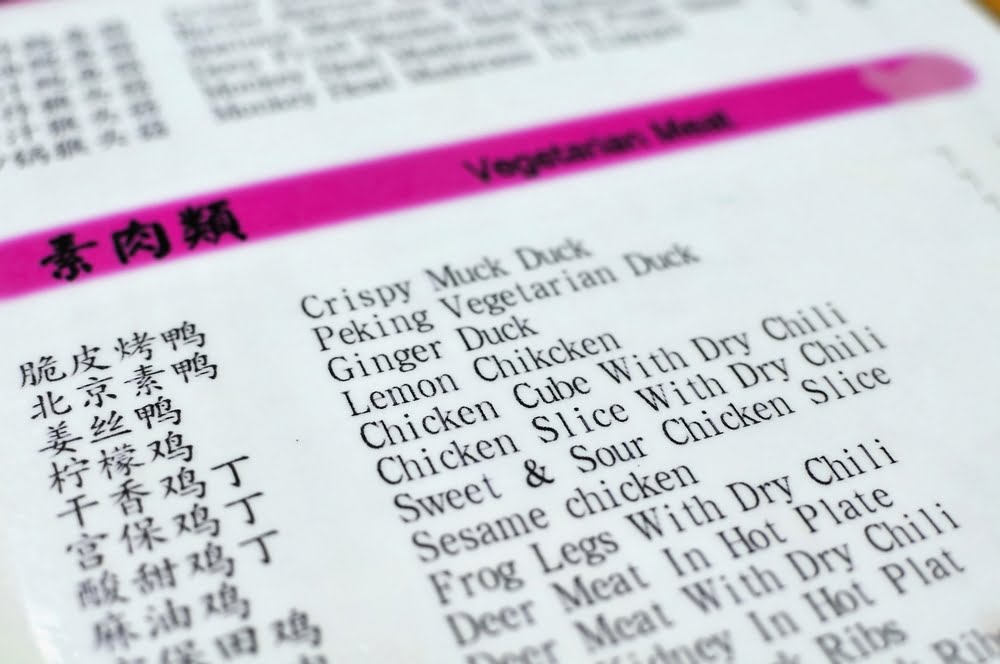
Now that you’re acquainted with the different types of Chinese restaurants, it’s time to learn how to navigate a Chinese menu. With a plethora of options to choose from, knowing what to expect in each category can be a game-changer when placing your Chinese food order.
- Appetizers (前菜 — Qián cài): Start your meal with a selection of cold or hot appetizers, which often include items such as dumplings, spring rolls, and marinated meats.
- Soups (汤 — Tāng): From light and refreshing to hearty and flavorful, Chinese soups are a fantastic way to whet your appetite for the main courses. Be careful, though; some of these can be a lot more filling than you expect.
- Main courses (主菜 — Zhǔ cài): Here, you’ll find a diverse array of meat, seafood, and vegetable dishes, often categorized by their primary protein or cooking method.
- Rice and noodles (米饭与面条 — Mǐfàn yǔ miàntiáo): As staples of Chinese cuisine, rice, and noodles are often served alongside main courses, but they can also come as dishes in their own right.
- Vegetables (蔬菜 — Shūcài): Don’t underestimate the power of a delicious vegetable dish, which can range from stir-fried greens to elaborate preparations of eggplant or mushrooms.
- Desserts (甜点 — Tiándiǎn): Satisfy your sweet tooth with Chinese desserts, such as red bean paste-filled pastries or refreshing fruit-based treats.
- Beverages (饮料 — Yǐnliào): Complete your meal with a variety of drinks, from traditional teas to fruit juices and sodas.
With this newfound understanding of Chinese cuisine and the various elements of a Chinese menu, you’re well on your way to confidently ordering Chinese food. But there’s more to come.
As we continue our journey to becoming Chinese food ordering connoisseurs, it’s essential to address the topic of dietary restrictions and preferences. Whether you follow a plant-based diet, have allergies or intolerances, or adhere to specific religious guidelines, fear not. Chinese cuisine offers many options to cater to your needs. Let’s explore how you can confidently navigate a Chinese menu while keeping your dietary requirements in mind.
- Vegetarian and vegan options (素食 – 素食主义者 — Sùshí zhǔyì zhě): Chinese cuisine offers an abundance of plant-based dishes that cater to both vegetarians and vegans. From tofu and vegetable stir-fries to flavorful mushroom dishes, you’ll find plenty of satisfying options. Be sure to clarify your preferences when ordering, as some dishes may include hidden ingredients like fish sauce or chicken broth.
- Allergies and intolerances (过敏 — Guòmǐn): If you have a food allergy or intolerance, it’s essential to communicate your needs clearly when ordering Chinese food. Common allergens like nuts, soy, and shellfish may be present in some dishes, so don’t hesitate to ask questions about the ingredients and preparation methods.
- Halal and Kosher considerations (清真与犹太 — Qīngzhēn yǔ Yóutài): For diners who follow Halal or Kosher dietary guidelines, it’s crucial to seek out restaurants that cater to these requirements. Many Chinese dishes incorporate pork or non-Halal/Kosher ingredients, so be sure to ask about substitutions or look for establishments that specialize in serving compliant dishes.
- Spiciness levels (辣度 — Làdù): One of the joys of Chinese cuisine is the range of spiciness found in various dishes. If you prefer milder flavors, don’t be shy about asking for recommendations or requesting that the heat be toned down. On the other hand, if you’re a spice enthusiast, you can always ask for an extra kick to satisfy your craving.
By being mindful of your dietary restrictions and preferences, you can still enjoy delicious and satisfying Chinese food. Remember, communication is key. Don’t hesitate to ask questions or make requests to ensure your dining experience is tailored to your needs. As you venture further into the world of Chinese cuisine, you’ll discover even more ways to customize your order, ensuring every meal is a delightful adventure.

Pronunciation tips and techniques
It’s time to tackle one of the most rewarding aspects of the experience: pronunciation. With the right tips and techniques, you’ll be well on your way to impressing your dining companions and Chinese restaurant staff alike, whether you’re placing your Chinese food order in person or ordering Chinese food online.
Here are some valuable pronunciation tips and techniques to enhance your Chinese food ordering experience:
Basic phrases
Familiarizing yourself with a few essential phrases can go a long way in ensuring a smooth dining experience. Here are some handy phrases to keep in mind:
- I’d like to order… (我想要点菜… — Wǒ xiǎng yào diǎn cài…)
- Can I have the… (可以给我… — Kěyǐ gěi wǒ…)
- Can you recommend… (你可以推荐… — Nǐ kěyǐ tuījiàn…)
- Thank you (谢谢 — Xièxiè).
It can also be worth memorizing some ways to say sorry in Chinese, just in case of any mishaps or translation blunders.
Tones
Mandarin Chinese has four distinct tones, and mastering them is vital for accurate pronunciation. When learning the names of dishes or key phrases, pay attention to the tones and practice speaking with the correct intonation. Here are some tips to get more used to tone use.
- Pinyin: Pinyin is the Romanized system for writing Chinese, which can be a helpful tool when learning pronunciation. When reading a Chinese menu or practicing phrases, use pinyin as a guide to help you pronounce words accurately.
- Practice with native speakers: OK, so this one is a bit of a no-brainer, but if you have the opportunity, practice your pronunciation with native Chinese speakers. This can provide invaluable feedback and help you improve your skills more quickly.
With these tips and techniques in hand, you’ll be well-prepared to order food in Chinese and navigate any Chinese menu with ease. As you continue to practice and improve your pronunciation, you’ll find that your confidence grows, making every trip to a Chinese restaurant or every instance of ordering Chinese food online an even more enjoyable experience.

Ordering tips and techniques
Now that we’ve explored the intricacies of Chinese cuisine, pronunciation, and dietary considerations, it’s time to share some practical tips and techniques for ordering Chinese food. Whether you’re dining in a Chinese restaurant or placing an order from the comfort of your own home, these pointers will ensure a smooth and enjoyable experience.
Before you visit a Chinese restaurant or place your Chinese food order, take some time to familiarize yourself with the menu. This will help you get an idea of the dishes you’re interested in and allow you to practice their pronunciations in advance.
One of the best aspects of Chinese cuisine is the opportunity to share a variety of dishes with your dining companions. Ordering multiple dishes to share allows everyone to sample different flavors and textures, making for a more enjoyable and communal experience.
Balance flavors and textures
When ordering Chinese food, aim for a harmonious balance of flavors and textures. Consider selecting a mix of spicy, sweet, sour, and savory dishes, as well as a combination of meat, seafood, vegetables, and starches to create a well-rounded meal.
Don’t be afraid to ask for recommendations
If you’re unsure about what to order or would like to try something new, don’t hesitate to ask your server or the restaurant staff for recommendations. They’ll be more than happy to guide you in making selections that cater to your tastes and preferences.
Explore regional specialties
As we’ve learned, Chinese cuisine is incredibly diverse, with each region offering its own unique flavors and dishes. Take the opportunity to explore regional specialties when visiting a Chinese restaurant or placing an order, as this can broaden your culinary horizons and introduce you to new, exciting flavors.
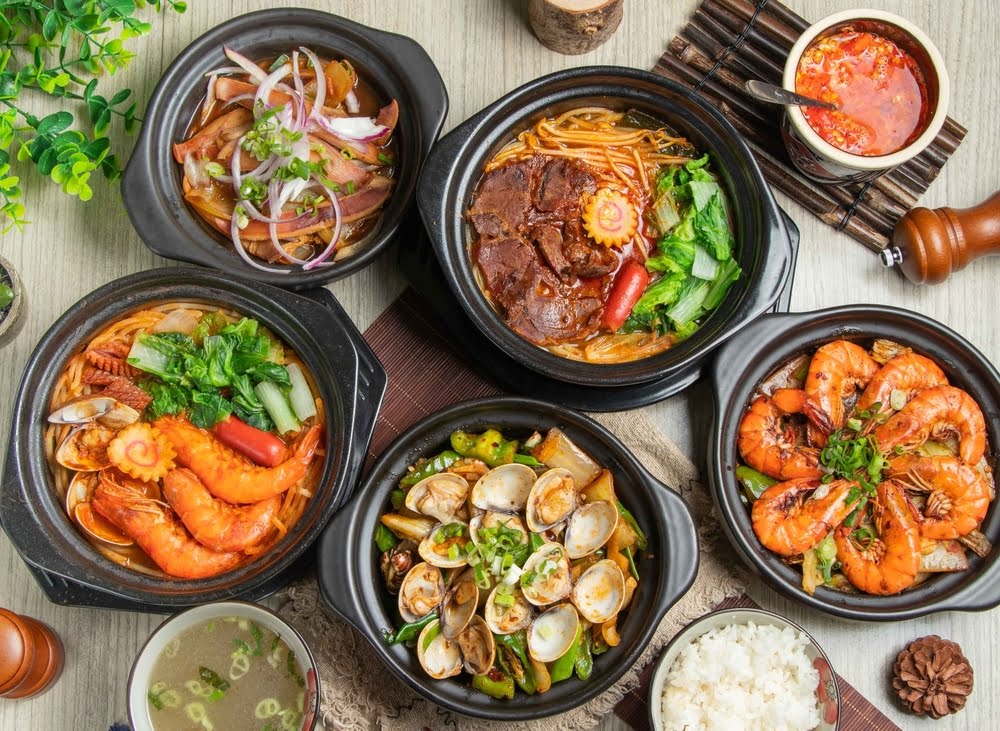
Keep an open mind
Chinese menus can sometimes feature dishes that may seem unfamiliar or even intimidating to some diners. Don’t be afraid to step out of your comfort zone and try something new. You might just discover a new favorite dish.
Take advantage of online resources
When ordering Chinese food online, use the wealth of available resources to help you make informed choices. From customer reviews to detailed dish descriptions and photos, these tools can help you craft the perfect Chinese food order.
Using chopsticks and other utensils
Chopsticks (筷子 — Kuàizi) are the primary utensils in Chinese cuisine, and mastering their use can greatly enhance your dining experience. Here are some basic tips for using chopsticks:
1. Hold the top chopstick like a pencil, resting it on your middle finger.
2. Keep the bottom chopstick stationary, resting it on the base of your thumb and ring finger.
3. Move the top chopstick to pinch and pick up food.
Remember, practice makes perfect. Don’t worry if you struggle initially. Most Chinese restaurants also provide forks and spoons upon request.
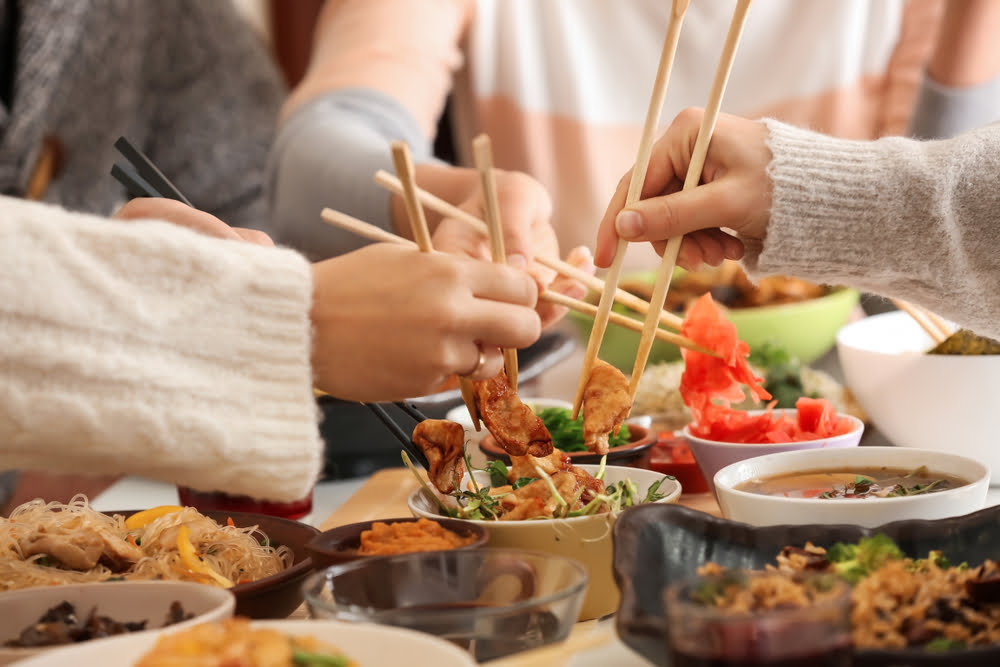
Ordering tea and its etiquette (茶 — Chá)
Tea is an integral part of Chinese culture and dining. When visiting a Chinese restaurant, you’ll often be served tea as a complimentary beverage. Here are some tea-related tips and etiquette:
1. To signal for a refill, partially lift the teapot lid or leave it slightly ajar.
2. If someone pours tea for you, gently tap your index and middle fingers on the table as a gesture of thanks.
3. It’s customary to pour tea for others before serving yourself.
Customizing your order
When ordering Chinese food, don’t hesitate to ask for modifications to suit your preferences. Whether it’s adjusting spiciness levels, substituting ingredients, or requesting extra sauce, most restaurants are happy to accommodate your requests. Just be sure to communicate your needs clearly and politely. Obviously, that can be a bit tricky if you’re not 100% confident about your linguistic skills.
If you’re dining in a Chinese restaurant where the staff speaks limited English, or if you’re traveling in China and want to order food in Chinese, language barriers can be a challenge. Here are some tips to help you navigate these situations:
1. Learn key phrases and dish names in Chinese (as mentioned earlier in this guide) to make ordering easier.
2. Use a translation app to help with communication, but be aware that translations may not always be accurate.
3. Point to menu items or use pictures to help communicate your order.
4. Be patient and maintain a friendly demeanor. A smile goes a long way in bridging language gaps.
By incorporating these ordering tips and techniques, you’ll be well on your way to becoming a Chinese-food ordering pro. With every Chinese restaurant visit or online order, you’ll continue to refine your skills and deepen your appreciation for the vast and delicious world of Chinese cuisine. Bon appétit, or as they say in Chinese, 祝你胃口好 (Zhù nǐ wèikǒu hǎo).
Advanced ordering strategies
Ready to elevate your Chinese food ordering game even further? Let’s dive into some advanced ordering strategies that incorporate Chinese words and phrases, allowing you to impress your fellow diners and enhance your dining experience. Remember to keep your tone friendly, conversational, and helpful as we explore these expert tips.
Chinese restaurants often have “secret” off-menu dishes known only to regular customers or those with inside knowledge. Don’t be afraid to ask your server, “你们有没有秘制菜品?” (Nǐmen yǒu méiyǒu mìzhì càipǐn? — Do you have any secret dishes?) You might just discover a hidden gem that becomes your new favorite thing to order.
If you’re dining with a group, consider creating your own custom set menu to share. This allows you to sample a variety of dishes and cater to everyone’s tastes and preferences. Be sure to include a mix of appetizers (前菜 — Qián cài), main courses (主菜 — Zhǔ cài), and sides (配菜 — Pèi cài) for a well-rounded meal.
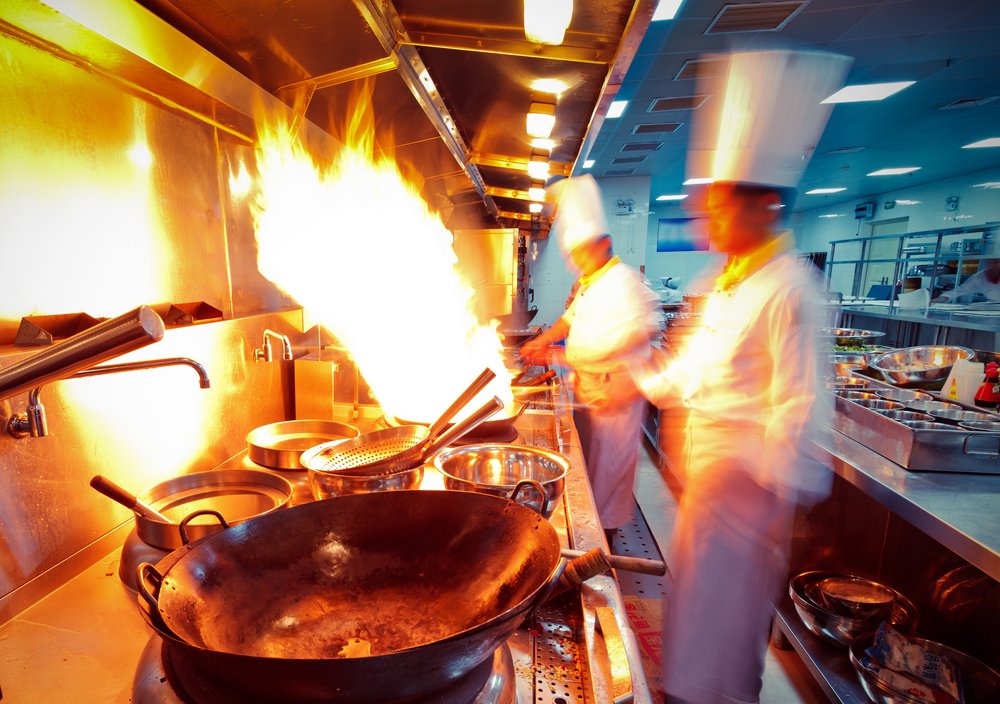
Ask for the chef’s recommendations
When ordering Chinese food, consider asking the chef for their recommendations. This can be a fantastic way to discover unique dishes that showcase the chef’s skills and creativity. You can ask your server, “你能帮我问厨师有什么菜推荐吗?” (Nǐ néng bāng wǒ wèn chúshī yǒu shé me cài tuījiàn ma? —” Can you ask the chef for any recommended dishes”?).
Embrace seasonal ingredients
Chinese cuisine places a strong emphasis on using fresh, seasonal ingredients. When placing your Chinese food order, inquire about dishes that feature seasonal produce or ingredients. You can ask, “你们有什么时令菜吗?” (Nǐmen yǒu shénme shílìng cài ma? — ”Do you have any seasonal dishes?”).
Get to know regional specialties
As you become more familiar with Chinese cuisine, try to learn about the different regional specialties and incorporate them into your orders. For example, Sichuan cuisine (川菜 — Chuān cài) is known for its bold, spicy flavors, while Cantonese cuisine (粤菜 — Yuè cài) often features delicate, lightly seasoned dishes. By exploring these regional differences, you can deepen your appreciation for Chinese food and make more informed ordering decisions.

Develop a rapport with restaurant staff
As you frequent your favorite Chinese restaurant, make an effort to get to know the staff and establish a rapport with them. They can offer valuable insights into the menu, recommend new dishes to try (推荐新菜 — Tuījiàn xīn cài), and even share insider tips on how to enhance your dining experience. At the very least, it’s worth learning a few different ways to say “nice to meet you” in Chinese to get your meal off to a good start.
By incorporating these advanced ordering strategies into your repertoire and using relevant Chinese words and phrases, you’ll be well on your way to becoming a true Chinese food aficionado. So go ahead and explore the delicious and diverse world of Chinese cuisine with confidence, curiosity, and a healthy appetite. And remember, practice makes perfect when it comes to pronunciation, so don’t be afraid to repeat the phrases and ask for help if needed.
Etiquette and cultural considerations
As we continue our journey into the world of Chinese cuisine, it’s essential to pay attention to etiquette and cultural considerations when ordering Chinese food and dining at a Chinese restaurant. These practices not only show respect for the culture but also improve your overall dining experience. Let’s check out some etiquette tips and cultural insights.
- Be mindful of seating arrangements: In traditional Chinese dining, seating arrangements are often considered important, especially during formal occasions. The guest of honor typically sits facing the entrance, while the host sits opposite. It’s a good idea to wait for the host or elder to sit down and start eating before you do.
- Serving others first: It’s customary in Chinese culture to serve elders and guests first before serving yourself. This gesture demonstrates respect and thoughtfulness, reflecting well on you as a diner.
- Politeness with chopsticks: When using chopsticks, avoid pointing them directly at someone, as it’s considered rude. Also, refrain from sticking your chopsticks vertically into a bowl of rice, as this resembles incense offerings to the deceased and is deemed inauspicious.
- Noise levels: Slurping noodles or soup is generally accepted in Chinese dining culture, as it’s believed to enhance the flavors. However, it’s still important to be mindful of your noise levels and avoid being overly loud or disruptive during your meal. And if you’re with someone who just won’t stop slurping or talking overly loudly, remember all of the ways you can say ‘shut up” in Chinese.
- Paying the bill: In Chinese culture, it’s common for the host or the person who initiated the meal to cover the entire bill. While this practice may be more relaxed among close friends or family, it’s still a good idea to offer to pay or at least contribute to the bill as a gesture of appreciation. Remember, you’re out for a good time, so don’t be afraid to crack some Chinese jokes with your friends.
- Showing gratitude: When dining at a Chinese restaurant, be sure to express your gratitude to your server and the restaurant staff for their service. A simple “谢谢” (Xièxiè — Thank you) can go a long way in making their day and leaving a positive impression. You could even take the time to learn a few ways to give compliments in Chinese.
- Leaving a tip: Tipping practices vary depending on the location of the Chinese restaurant. In China, tipping is not customary and may even be refused. However, in Western countries, tipping is usually expected. Be sure to familiarize yourself with the local tipping customs to avoid any awkward situations.

By keeping these etiquette and cultural considerations in mind when ordering Chinese food and dining at a Chinese restaurant, you’ll be better equipped to navigate the rich and diverse world of Chinese cuisine.
Remember, understanding and respecting the culture is an essential aspect of enjoying any culinary experience. So, embrace the traditions, savor the flavors, and most importantly, have fun on your Chinese food journey.
Embark on your Chinese food adventure
Ordering Chinese food and dining at a Chinese restaurant can be a truly enriching and enjoyable experience. By following the tips and guidelines we’ve outlined in this comprehensive guide, you’ll be well-prepared to navigate the diverse and flavorful world of Chinese cuisine. Remember to practice your pronunciation, embrace regional specialties, and be mindful of etiquette and cultural considerations as you order your delicious Chinese food.
Spice up your Chinese food experience with Mandarin Blueprint
Imagine being able to confidently order food in Chinese and delve deeper into the rich culinary world of Chinese cuisine. Our proven method can get you there three to five times faster while keeping boredom and confusion at bay. Ready to spice up your Chinese food experience? Get the Blueprint and start your Mandarin learning adventure today.








